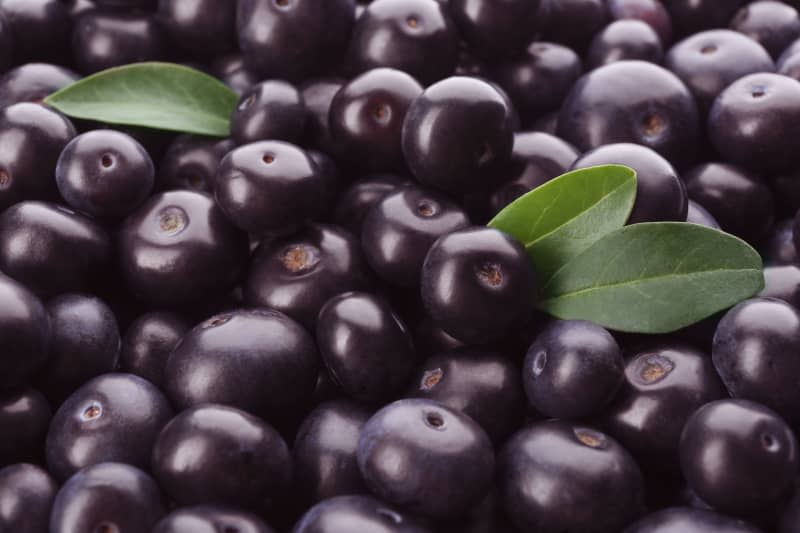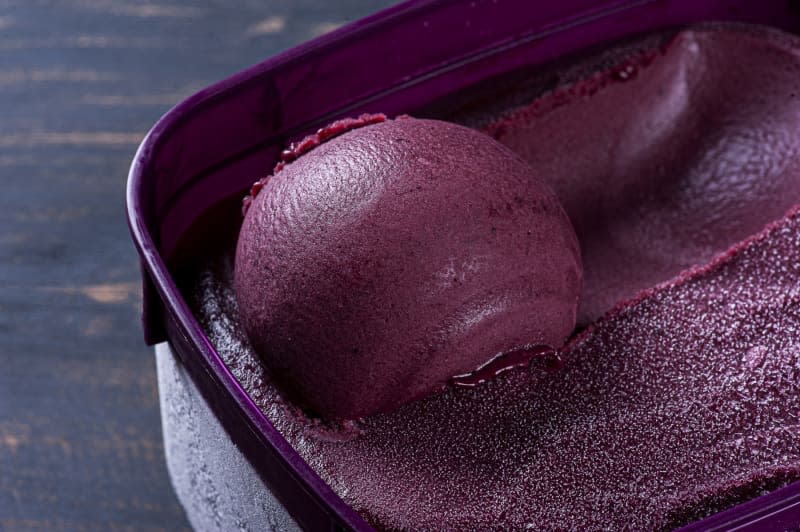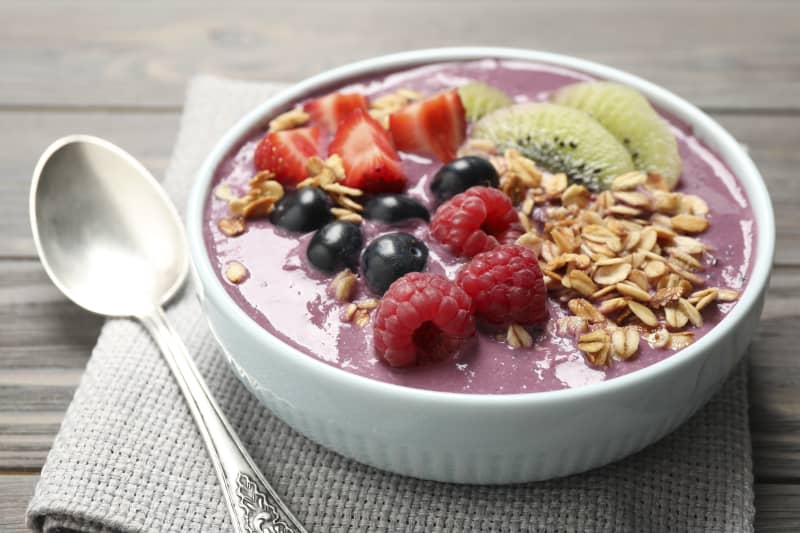What Is Açai? Everything to Know About the Superfood

You may have seen açai (pronounced ah-sigh-EE) cropping up on brunch menus and in places dedicated to serving the vibrant purple bowls topped with fresh fruit and crunchy granola. Since açai has a tart and earthy flavor profile, it pairs well with sweeter flavors like honey or maple syrup. But what exactly is açai? Here, we’ll learn more about the fruit, where to find it, and how to use it.
Açai are plump, dark, purple-hued berries that grow on the açai palm tree, which is native to Brazil.
What Does Açai Look and Taste Like?
Açai berries are similar in size to a grape and have large seeds. After the berries are harvested, they are soaked to soften the skin, then mashed and strained to remove the seeds, creating a smooth pulp, explains Victor Vasconcellos, executive chef of Berimbau Brazilian Kitchen. “Raw açai tastes completely different from how people often experience it in sweetened bowls or with other fruit,” he says. “In its true essence, raw açai is slightly sour, fatty, and earthy.”
The açai served up in your breakfast bowl has a smooth, creamy texture. According to chef and food writer Jaíne Mackievicz, “The smell of açai is earthy and fruity, with notes of blueberry, black currant, and sometimes a hint of grape, followed by a sweetness reminiscent of dark chocolate.”
Açai Health Benefits
High in antioxidants. Antioxidants are compounds that neutralize free radicals in the body. “Antioxidants are known for preventing cancer cells from reproducing and spreading in the body,” says Sylvia Klinger, RDN, founder of Hispanic Food Communications.
Boosts cognitive function. “The antioxidants in açai can help counteract the damaging effects of brain cell oxidation deterioration, caused by unhealthy lifestyle habits and the natural process of aging, which can negatively impact memory retention and learning ability,” Klinger says.
Supports cardiovascular health. “Scientific studies have shown that the high polyphenol content found in açai, such as an açai-berry juice blend, resulted in significant lipid profile changes, such as a reduction in LDL — the bad cholesterol, a reduction in triglyceride levels, and an increase in HDL — the good cholesterol,” Klinger says.

Where to Find Açai
Açai berries are fragile. Since they don’t ship well, the whole berries aren’t available internationally so you’ll never find fresh ones in the produce section. Because of that, the fruit is often blended into a pulp and sold frozen, or even in powder form. When purchasing açai either in the grocery store or online, look for certifications like Fair Trade, Organic, Rainforest Alliance, or Forest Stewardship Council (FSC) to ensure sustainability,” Mackievicz says. “Choose brands that provide transparent sourcing information, as they support local Amazonian communities economically and culturally.”

How to Use Açai
The way açai is served in the U.S. is similar to what you’d get in Brazil. “In most parts of Brazil, açai is prepared in the form of a thick, smoothie-like bowl called “açai na tigela,” made from frozen açai berries,” Mackievicz says. She says bowls are often served with sliced bananas, strawberries, or other fresh fruit, along with granola, shredded coconut, powdered milk, and sometimes honey or sweetened condensed milk for sweetness. Açai bowls are a popular breakfast or snack in Brazil.
Frozen açai pulp can also be used in savory and sweet recipes. For sweets, it is commonly used in cakes, flans, cheesecakes, and breads, Mackievicz says. “It is also great for ice creams, semifreddos, sorbets, and other frozen desserts, especially when combined with jams and nuts.”
“As an Amazonian, I grew up enjoying açai as a savory dip for fried fish, so that’s my favorite way of preparing it,” Mackievicz says. “I combine 3 parts pure açai pulp with 2 parts water, 1 part lime juice, a generous drizzle of extra virgin olive oil, and a pinch of salt, as if I were making a vinaigrette.” Açai can also be used as a delicious dipping sauce, such as for barbecue or in a homemade ketchup, and even as a creative twist in alcoholic drinks, Mackievicz says.

